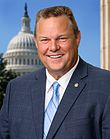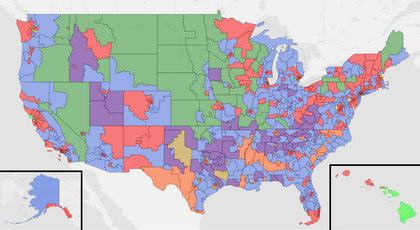2020 United States general election (Archive)
This article is incomplete because it is pending further input from participants, or it is a work-in-progress by one author. Please comment on this article's talk page to share your input, comments and questions. Note: To contribute to this article, you may need to seek help from the author(s) of this page. |
| |||||||||||||||||||||||||||||||||||||||||||||||||||||||||||||||||||||||||||||||||||||||||||||
All 1998 seats to the United States Congress 1000 seats needed for a majority | |||||||||||||||||||||||||||||||||||||||||||||||||||||||||||||||||||||||||||||||||||||||||||||
|---|---|---|---|---|---|---|---|---|---|---|---|---|---|---|---|---|---|---|---|---|---|---|---|---|---|---|---|---|---|---|---|---|---|---|---|---|---|---|---|---|---|---|---|---|---|---|---|---|---|---|---|---|---|---|---|---|---|---|---|---|---|---|---|---|---|---|---|---|---|---|---|---|---|---|---|---|---|---|---|---|---|---|---|---|---|---|---|---|---|---|---|---|---|
| Turnout | 90.59% | ||||||||||||||||||||||||||||||||||||||||||||||||||||||||||||||||||||||||||||||||||||||||||||
| |||||||||||||||||||||||||||||||||||||||||||||||||||||||||||||||||||||||||||||||||||||||||||||
Results by winning party by constituency for the U.S. Congress SDP SSD GRN FFA DRP FDP CCU NFP SOC | |||||||||||||||||||||||||||||||||||||||||||||||||||||||||||||||||||||||||||||||||||||||||||||
| |||||||||||||||||||||||||||||||||||||||||||||||||||||||||||||||||||||||||||||||||||||||||||||
The 2020 United States general election was held on February 22, 2020 to elect members of the 53rd Congress of the United States. The election was called following the dissolution of the 52nd Congress elected at the 2015 general election. All 1998 seats of the Congress were up for election.
The second-term SDP-led government was able to enter a historic third-consecutive term by entering into a "Red-Green-Green" coalition with the Greens and Farmers Federation. Without the Farmers Federation, the SDP/SSD-Greens coalition would have been unable to form government as the collective coalition lost a net of 89 seats. Despite this, the SDP/SSD remained the largest parliamentary voting bloc, with a joint 783 seats between them. This was followed by the Democratic Republican Party which saw it's third consecutive election with losses, continuing a decade of losses.
The electoral system in the United States enforces compulsory voting, and uses full-preferential voting for single-member constituency seats with first-past-the-post voting to award at-Large balancing seats. The election was administered by the Federal Electoral Commission.
On election night the result was seen as an aberration as opinion polling had been unable to capture the strong increase in support for non-major parties. Polling had accurately predicted the SDP/SSD would remain the largest party, but had been unable to forecast the full scale of support gained and lost in various states. Opposition Leader Mitt Romney indicated his desire to fight to remain leader of the DRP, but within days a competitive race has emerged to decide the new leader of the DRP. Chancellor John Fetterman indicated he would attempt to form coalition with either the Free Democrats or Farmers, and was able to announce the formation of a coalition six weeks later.
Results
See Also: 2020 United States general election by state

Coalition
Social Democratic Party (657)
Southern Social Democrats (126)
The Greens (145)
Farmers Federation (102)
Opposition (618)
Democratic Republican Party (618)
Crossbench (319)
Free Democratic Party (154)
Christian Conservative Union (137)
National Freedom Party (33)
Socialist Party (28)
| Party | Votes | % | Swing (pp) | Seats | Change (seats) | |||||
|---|---|---|---|---|---|---|---|---|---|---|
| C | A | T | ||||||||
| Social Democratic Union | ||||||||||
| Social Democratic | 73,779,189 | 31.48 | −5.26 | 424 | 233 | 657 | ||||
| Southern Social Democrats | 13,939,199 | 5.95 | −0.69 | 81 | 45 | 126 | ||||
| Union Total | 87,718,388 | 37.43 | −5.95 | 505 | 278 | 783 | ||||
| Democratic Republican | 69,031,326 | 29.45 | −2.68 | 365 | 251 | 616 | ||||
| Free Democratic | 17,899,640 | 7.64 | +2.30 | 9 | 145 | 154 | ||||
| Christian Conservative Union | 17,210,894 | 7.34 | +2.08 | 51 | 86 | 137 | ||||
| The Greens | 16,648,502 | 7.10 | +0.61 | 20 | 125 | 145 | ||||
| Farmers Federation | 13,143,201 | 5.61 | +1.23 | 46 | 56 | 102 | ||||
| Socialist | 6,764,540 | 2.89 | −0.13 | 1 | 27 | 28 | ||||
| National Freedom | 5,952,839 | 2.54 | +2.54 | 2 | 31 | 33 | ||||
| Turnout | 234,369,207 | 90.59 | +0.04 | – | – | – | – | |||
| Registered voters/turnout | 258,715,972 | – | – | – | – | – | – | |||
Background
Previous Election
At the 2015 United States general election, first-term Chancellor Barack Obama was able to form government for a second term by entering a coalition with the Greens. It had been apparent on election night the Social Democrats had lost their near-majority status and would need to enter formal coalition talks. Also at the 2015 election, independent MC for Manhattan West Michael Bloomberg was unseated by Cynthia Nixon who won the seat for the Greens. This constituted the first Congress since 1923, to have no non-partisan independent MCs. For the first time ever in U.S. history, two consecutive Congresses featured no independent MCs although independent candidate for Manhattan West, Donald Trump, was the closest independent candidate for a constituency seat.
Barack Obama announced a coalition with the Greens in early November, three weeks after the election.
Union Instability
Since the formation of the Southern Social Democrats in the early 1970s as a separate brand of Social Democratic candidates, the demarcation line had been strictly enforced. The line explicitly curtailed the national Social Democratic Party from attempting to coerce the affiliation of state, county or sub-branches of the Southern Social Democrats to defect and instead elect delegates and participate in the SDP ecosystem. This line was first eroded at the 1998 Conference, where a majority of delegates from Florida voted to amend the provisions required, and return the state branch of the Southern Social Democrats into the national Social Democratic Party. In 2004, efforts to draw away Texas, narrowly failed. In 2012, shortly into the Obama Chancellery, the Georgia branch of the SSD defected and in 2014, Oklahoma followed suit - though the two did so for wildly different reasons. In Georgia, an influx of urban Social Democrats, with opinions closer to the national median than the Southern median took control of the branch while in Oklahoma, the continued decline of the party saw cosmopolitan delegations outweigh conservative factions and in turn both branches were returned into the SDP proper by the 2015 general election.
At the 2015 general election, the Union was re-elected to a second term in coalition with the Greens. Then-Chancellor Barack Obama retired in 2017 and was succeeded by Obama-ally Terry McAuliffe of Virginia. McAuliffe had overseen the affiliation of the SSD-Virginia to the SDP ahead of the 2016 Social Democratic Union Convention. The continued decline of the SSD was met with strong demands from SSD MCs, hence McAuliffe who had been the subject of disapproval by SSD leadership and caucus members, was dismissed six months into his tenure. He would be succeeded by Bill Nelson (MC for Florida). Nelson was widely seen as a stand-in among the public due to his age and hence, the anticipation was that there would be a full party ballot for Union Leader in the 2018 convention. This proved inaccurate, as with no consensus candidate as an alternative, no ballot was ordered for the leadership of the party.
In 2019, the Nelson Government was dealt a serious defeat in the 2019 Zanuck special election. SDP Incumbent Gaston Caperton had died of a heart attack and at the eventual by-election, the SDP experienced the largest single-seat swing for a political party since the adoption of full preferential voting. The result was seen as a wide rebuke of the collective SDP/SSD union brand and triggered calls for Nelson's resignation. At the ensuing leadership election, an upset was seen as backbencher John Fetterman, MC for Stern; was elected leader of the SDP/SSD.
Upon Fetterman's swearing-in, the Union vote experienced a fall in opinion polling to below 30%.
Constituencies changing parties
See Also: Post-election pendulum for the 2020 United States general election
Members in italics did not re-contest their Congressional seats at this election.
Gained by Social Democratic Union
Gained by Democratic Republicans
Gained by Free Democratic Party
Gained by Christian Conservative Union
Gained by the Greens
Gained by Farmers Federation
Gained by Socialist Party
Gained by National Freedom Party
| Seat | Pre-election | Swing | Post-election | ||||||
|---|---|---|---|---|---|---|---|---|---|
| Party | Member | Margin | Margin | Member | Party | ||||
| Holman, TX | Democratic Republican | Brian Babin | [a] 14.08 | 21.57 | 7.49 | Trent Ashby | National Freedom | ||
| Menchaca, TX | Democratic Republican | Mac Thornberry | [b] 6.85 | 16.37 | 9.52 | Paul Searl | National Freedom | ||
| Seat | Pre-election | Swing | Post-election | ||||||
|---|---|---|---|---|---|---|---|---|---|
| Party | Member | Margin | Margin | Member | Party | ||||
| Sequoyah, TN | Democratic Republican | Lamar Alexander | 9.10 | 11.52 | 2.42 | Ailene Combs | Christian Conservative | ||
| Rosenburg, TX | Democratic Republican | Pete Olson | 1.41 | 3.28 | 1.84 | Sri Kulkarni | Southern Social Democrats | ||
Retiring members
In the United States, constituency seats have a historical tendency to favor incumbents against the national partisan swing. Hence, seats where incumbents announce their retirements, are noted as potentially more competitive. The below are constituency electorates with incumbent MCs who retired and did not recontest their election.
Social Democratic
- Tom Udall (Bandelier, NM) - announced retirement March 25, 2019.
- Jose Serrano (Feynman, NY) - announced retirement March 25, 2019.
- Susan Davis (San Diego East, CA) - announced retirement September 4, 2019.
- Nita Lowey (Westchester, NY) - announced retirement October 10, 2019.
- Peter Visclosky (Gary, IN) - announced retirement November 6, 2019.
Southern Social Democrats
Democratic Republican
- Lamar Alexander (Sequoyah, TN) - announced retirement December 17, 2018.
- Mike Enzi (Knapp, WY) - announced retirement May 4, 2019.
- Rob Woodall (Buford, GA) - announced retirement February 7, 2019.
- Susan Brooks (Mulinnix, IN) - announced retirement June 14, 2019.
- Paul Mitchell (Adela, MI) - announced retirement July 24, 2019.
- Pete Olson (Rosenburg, TX) - announced retirement July 25, 2019.
- Martha Roby (Baskin, AL) - announced retirement July 26, 2019.
- Mike Conaway (Holelamp, TX) - announced retirement July 30, 2019.
- Will Hurd (Ximenes, TX) - announced retirement August 1, 2019.
- Kenny Marchant (Colleyville, TX) - announced retirement August 5, 2019.
- John Shimkus (Effingham, IL) - announced retirement August 30, 2019.
- Bill Flores (Waco, TX) - announced retirement September 4, 2019.
- Jim Sensenbrenner (Welles, WI) - announced retirement September 4, 2019.
- Francis Rooney (Naples, FL) - announced retirement October 19, 2019.
- Peter King (Hempstead, NY) - announced retirement November 11, 2019.
Others
Farmers Federation
- Pat Roberts (Layton, KS) - announced retirement January 4, 2019.
- Dave Loebsack (Carothers, IA) - announced retirement April 12, 2019.
- Greg Walden (Peyton, OR) - announced retirement October 28, 2019.






